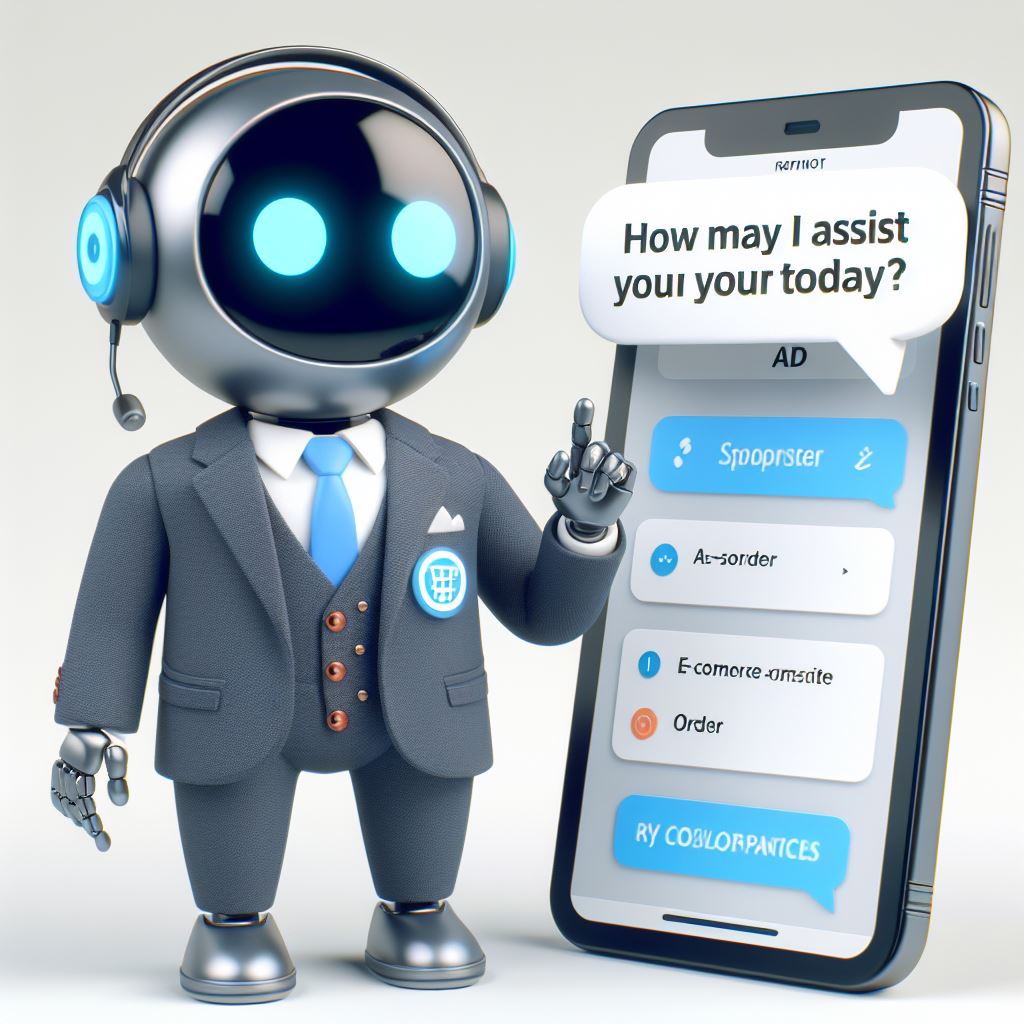Introduction
Artificial intelligence (AI) is transforming the way businesses interact with their customers. AI tools can help you create personalized, engaging, and effective communication channels through your website chatbot and email marketing campaigns. In this blog post, I will show you how to integrate AI tools with your website chatbot and email marketing, and what benefits you can expect from doing so. Whether you want to increase conversions, boost customer loyalty, or improve customer satisfaction, AI tools can help you achieve your goals. Let’s get started!
What is a chatbot and why do you need one?
A chatbot is a software application that can interact with users through natural language, either via text or voice. Chatbots can provide various services, such as answering questions, providing information, booking appointments, making reservations, etc.
Chatbots are becoming more popular and widely used in various domains, such as e-commerce, education, health care, entertainment, etc. This can offer many benefits for both businesses and customers, such as:
- Improving customer service and satisfaction: Chatbots can provide 24/7 support, instant responses, personalized recommendations, and friendly conversations to customers. Chatbots can also handle multiple requests simultaneously, reducing waiting time and frustration for customers.
- Increasing sales and conversion: Chatbots can guide customers through the buying process, suggest relevant products or services, upsell and cross-sell, and generate leads. Chatbots can also collect feedback and data from customers, which can help improve marketing strategies and customer loyalty.
- Reducing costs and resources: Chatbots can automate repetitive and mundane tasks, such as answering FAQs, scheduling appointments, confirming orders, etc. Chatbots can also reduce the need for human agents, saving labor and training costs.
How to create a chatbot for your website or business?
Creating a chatbot can be a challenging and complex task, depending on the level of functionality and intelligence you want your chatbot to have. However, there are some general steps and best practices that you can follow to create a chatbot that suits your needs and goals. Here are some of them:
- Define your chatbot’s purpose and scope: You need to decide what kind of service or value your chatbot will provide to your users, and what kind of questions or requests will be able to handle. You also need to define your target audience, their preferences, and their pain points. This will help you design your chatbot’s personality, tone, and style.
- Choose your chatbot’s platform and tools: You need to choose where and how your chatbot will be deployed, such as on your website, mobile app, social media, messaging app, etc. You also need to choose what kind of tools or frameworks you will use to build your chatbot, such as chatbot builders, natural language processing (NLP) engines, artificial intelligence (AI) platforms, etc.
- Design your chatbot’s flow and content: You need to plan and map out your chatbot’s conversation flow, such as the possible user inputs, chatbot responses, and actions. You also need to create and optimize your chatbot’s content, such as the greetings, prompts, messages, buttons, images, etc.
- Test and improve your chatbot: You need to test your chatbot’s performance, functionality, and usability, such as the accuracy, speed, and reliability of your chatbot’s responses and actions. You also need to collect and analyze feedback and data from your users, such as the satisfaction, engagement, and retention rates of your chatbot.

How to integrate AI tools with your chatbot?
Integrating AI tools with your chatbot can enhance your chatbot’s performance and functionality, making your chatbot more intelligent, conversational, and human-like. AI tools can help your chatbot understand, generate, and manage natural language, as well as provide personalized and relevant services to your users. Here are some examples of AI tools that can be integrated with your chatbot:
Natural language understanding (NLU):
NLU is the ability of a chatbot to understand the meaning and intent of the user’s input, such as the words, phrases, sentences, and context. NLU can help your chatbot extract and process the relevant information from the user’s input, such as the keywords, entities, sentiments, etc. NLU can also help your chatbot handle different languages, dialects, accents, and slang.
Natural language generation (NLG):
NLG is the ability of a chatbot to generate natural language output, such as the words, phrases, sentences, and context. NLG can help your chatbot produce coherent, fluent, and appropriate responses and actions to the user’s input. NLG can also help your chatbot vary and adapt its output, such as the tone, style, and emotion.
Dialogue management (DM):
DM is the ability of a chatbot to manage and control the conversation flow, such as the topics, transitions, and goals. DM can help your chatbot maintain and guide the conversation, such as by asking questions, providing suggestions, confirming information, etc. DM can also help your chatbot handle different scenarios, such as errors, interruptions, and chit-chat.
How to measure and optimize your chatbot’s performance?
Measuring and optimizing your chatbot’s performance is essential to ensure your chatbot’s quality, effectiveness, and efficiency. You need to monitor and evaluate your chatbot’s performance, such as by using metrics, indicators, and tools. You also need to improve and optimize your chatbot’s performance, such as by using strategies, techniques, and best practices. Here are some of them:
Metrics and indicators:
You need to use quantitative and qualitative measures to assess your chatbot’s performance, such as the number of users, sessions, messages, conversions, etc. You also need to use key performance indicators (KPIs) to track your chatbot’s progress and success, such as the satisfaction, engagement, retention, and loyalty rates of your chatbot.
Tools and platforms:
You need to use various tools and platforms to monitor and analyze your chatbot’s performance, such as analytics, dashboards, reports, etc. You also need to use feedback and data collection tools and platforms, such as surveys, ratings, reviews, etc. You need to use these tools and platforms to gain insights and recommendations for your chatbot’s improvement and optimization.
Strategies and techniques:
You need to use various strategies and techniques to improve and optimize your chatbot’s performance, such as testing, debugging, updating, etc. You also need to use best practices and guidelines to ensure your chatbot’s quality and consistency, such as following the chatbot design principles, standards, and ethics.
The top AI chatbot development platforms
- Tidio – Tidio provides a chatbot-powered live chat solution to help you enhance customer service. In order to help you with proactive customer service, it also offers a live view feature that allows you to see who is currently on your website.
- MobileMonkey- With the help of this omnichannel chatbot provider, you can improve customer service by integrating Webchat, Facebook Messenger, Instagram, SMS messaging, and Instagram. It is the greatest platform made to assist companies in maintaining contact with their clients and bringing in fresh leads from social media.
- Chatfuel- This chatbot provider is ideal if you require a user-friendly bot for your Instagram customer service and Facebook Messenger. A ton of documentation and detailed building instructions for your chatbots are provided.
- ManyChat- A cloud-based chatbot solution called ManyChat is used for text messaging and social media chat marketing campaigns. To more effectively target each consumer group, you can divide up your audience.
- Snatchbot- NLP (Natural Language Processing) and machine learning technologies are included in this AI platform. You can use action buttons, multiple-choice questions, or simple conversational designs.You can send broadcasts to clients and incorporate conditions into flows.
- Aivo- One of the top AI platforms is Aivo, which provides multilingual bots for your company. Additionally, it enables you to customize the bots to your exact specifications. A number of dashboards that help with data interpretation offer statistical visualization.
- Dialogflow- This is a Google AI chatbot platform that builds conversational user interfaces for websites, apps, IoT devices, and messaging services using natural language processing (NLP).
- Octane AI- Shopify users can create customized and branded quizzes with Octane AI e-commerce software, which gathers contact details and suggests a range of goods or content to users.
AI Integration: Chatbots and Email Marketing
Integrating AI tools for chatbot and email marketing into your website is a smart move. It brings efficiency and personalization to user interactions. As we conclude, let’s reflect on the key steps to make this integration successful.
AI tools enhance chatbots. They make them more responsive and intuitive. They also improve email marketing. They help send messages that users find relevant and timely. This is how you build connections with your audience.
Here are the essentials:
- Choose AI tools that learn from user interactions.
- Ensure your chatbot and emails reflect your brand’s voice.
- Use AI to analyze data for better user engagement.
You’re now set to integrate AI into your website. Your chatbot and email marketing will work smarter. They will offer experiences that users appreciate.
Embrace these AI tools. Let them transform your website into a hub of engaging conversations and effective marketing.
Stay informed with the latest in AI News. Your journey with AI is just beginning.

